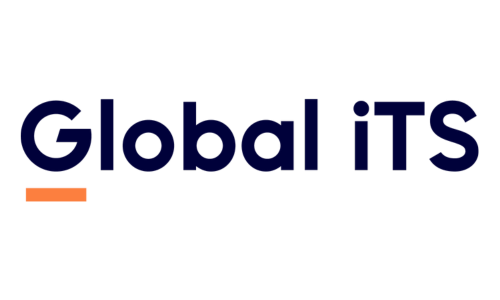The global health crisis has transformed the way we work and live. In the past couple of months, IT leaders around the globe who have been quickly adjusting IT priorities to enable remote work, and optimize costs and efficiencies while investing in smart ways to prepare for recovery and future growth. To achieve these goals, many IT leaders are accelerating the adoption of cloud computing which is Microsoft Azure Infrastructure.
Optimize IT costs and maximize business value with Azure infrastructure
Below are eight ways in which Azure infrastructure can help you today to improve cash flow, achieve cost savings, increase operational efficiencies, and unify security and management.
1. Enable remote work anywhere and ensure productivity:
To ensure that users have access to desktops and apps they need to work from anywhere, you can spin up and scale virtual desktops quickly with Windows Virtual Desktop—no need to provision new hardware. Windows Virtual Desktop delivers the best Windows 10 and Office 365 virtual desktop experience with support for multi-session. You only pay for the infrastructure that you use and save money by turning off machines when they are not in use. In addition to virtual desktops, employees need access to resources across on-premises and cloud. With Azure, you can quickly extend and expand your on-premises virtual private network (VPN) solution with Azure VPN Gateway. It can be provisioned quickly and scale up and down easily.
2. Maintain business continuity to avoid costly disruptions:
Many companies are taking a closer look at their backup and disaster recovery strategy to make sure data and applications are fully protected from business disruptions. With just a few clicks, Azure Backup and Azure Site Recovery let customers easily back up their data and applications to the cloud, and quickly deploy cloud-based replication, failover, and recovery processes. Also, to ensure reliable connectivity, customers are using Azure Virtual WAN with supported partner SD-WAN devices to connect remote branch offices to on-premises and public cloud where applications and data are hosted. Azure Virtual WAN routes traffic from the closest network location to the branch office over Microsoft’s dedicated global network to its destination, providing fast and reliable connectivity at scale.
3. Secure on-premises and cloud workloads from increased cyberattacks:
With the increased dependence on digital infrastructure to enable remote work, there has been an increase in cybercrime. Azure Security Center provides a unified view of the security state of all your cloud and on-premises workloads and gives you security recommendations including turning on multi-factor authentication (MFA), ensuring secure shell (SSH) and remote desktop protocol (RDP) ports are protected, and more. Azure Web Application Firewall and Azure DDoS Protection protect your web workloads with zero trust security including verifying identity on every access and ensuring your networks are correctly segmented. Many customers are also taking advantage of Azure Sentinel, a cloud native security information and event management SIEM, to access advanced AI-enabled threat protection.
4. Efficiently govern and manage your hybrid environments:
Customers’ IT environments are evolving with different types of applications often running on a diverse set of hardware across distributed locations. How to efficiently manage IT resources without slowing down developer innovation is a key challenge that IT leaders face today. Azure Arc lets customers seamlessly govern, manage, and secure Windows and Linux servers, Kubernetes clusters and applications across on-premises, multicloud, and the edge from a single control plane. Azure Arc also brings Azure services such as Azure data services to any infrastructure, so customers can take advantage of Azure innovation—including the latest cloud capabilities, scalability, rapid deployment, and cloud billing—on any cloud and any Kubernetes cluster.
5. Migrate to the cloud and save money:
Organizations are accelerating cloud migration to reduce capital expenditure, realize cost savings and speed up time to value. With offers including Azure Hybrid Benefit and free extended security updates, Azure is five times cheaper than AWS to migrate Windows Server and SQL Server workloads. Migrate your Linux workloads to Azure to gain more performance and efficiency on your favorite distributions with integrated support from Microsoft. In addition, we help customers reduce migration costs and accelerate their migration journey with free migration tools, guidance, and best practices through the Azure Migration Program.
6. Drive insights and agility by running SAP solutions on Azure:
Running SAP solutions on Azure provides customers with real-time insights and flexibility to quickly respond to changing needs in the market, while paving a path to a resilient future. Azure is a proven cloud platform that is optimized to run your mission-critical SAP workloads and currently supports some of the largest production SAP landscapes in the public cloud. By migrating SAP workloads on Azure, customers can pool SAP and non-SAP data and apply intelligent analytics, tap into more than 100 Azure services to create app innovation, and use SAP Cloud Platform to integrate with existing productivity and collaboration tools such as Microsoft 365, Microsoft Teams, Microsoft Power Apps, and Microsoft Power BI.
7. Modernize on-premises infrastructure:
Many customers keep certain workloads on-premises to meet regulatory requirements, address latency issues, or maximize existing investments. In this case, customers can take advantage of cloud innovation by modernizing their on-premises infrastructure and increase efficiency. For example, Azure Stack HCI lets customers consolidate on-premises virtualized applications on cloud-connected, hyper-converged infrastructure to access the best price-performance for storage and compute. Azure Stack Hub helps customers in over 60 countries build and deploy cloud-native applications on-premises and run their own private, autonomous cloud-connected or disconnected—from Azure.
8. Continuously cost optimize your workloads:
Azure offers many ways for customers to optimize their costs. Azure Cost Management + Billing give customers free tools to monitor and analyze cloud spend, set budget and spending alerts, and allocate cloud costs across teams. Azure Advisor helps organizations optimize cloud resource utilization with personalized recommendations. Offers such as Azure Spot Virtual Machine combined with Azure Reservations let customers save up to 90 percent over pay-as-you-go pricing on Azure services with pre-paid reservation pricing or utilizing unused Azure compute capacity at deep discounts.
Source: https://azure.microsoft.com/en-us/blog
Global iTS is leading Microsoft Dynamics 365 ERP and CRM Partner with offices all over GCC (Bahrain, Saudi Arabia KSA, Oman “Muscat”, UAE “Dubai”, and Kuwait), with domain expertise in Financial Services Sector Digital Transformation like” Retail Banking, Commercial Banking, Insurance Providers, Private Equity, and Investment Banking.






